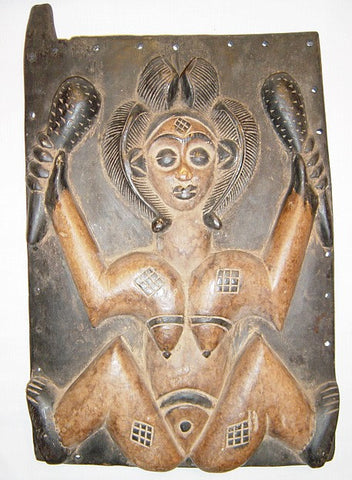ArtTribal.com
Punu Door
ArtTribal.com
Sold
The 40,000 Punu reside on the left bank of the Upper Ngoume River (Gabon) and belong to the group of tribes known as Shira. They live in independent villages divided into clans and families, and social cohesion is ensured by a society known asmoukouji. Its primary role is to regulate community life with regards to social and judicial matters, and mainly it applies itself to the neutralization of evil forces. This example of the 'displayed female motif' is decorated with an elaborate coiffure and body scarification. Costumed stilt dancers wore Punu masks with a similar face. This image represents the spirit of beautiful young woman who returned from dead to participate in village life. The whitened figure (white color has been apparently mostly erased) makes reference not only to the dead, but also to anti-witchcraft techniques. Witches were believed to be most active and powerful at night, and whiteness refers to light and clarity, which stand in opposition to night and mystery. In Gabon and much of central Africa clairvoyants ring their eyes with white clay (kaolin) as a strategy for detecting witchcraft.
Provenance: Raskin Collection
Sold at Estate Sale
Product Details:
- Size: 15" x 22" x 2"
- Shipping: $120.00
- Material: Wood
- Quantity: Sorry, this product is not available
- SKU:

